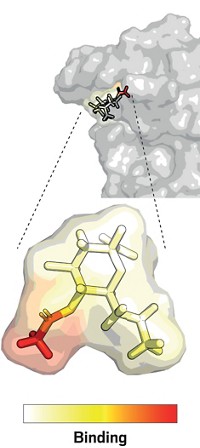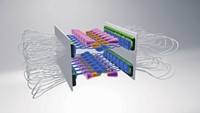Advertisement
Grab your lab coat. Let's get started
Welcome!
Welcome!
Create an account below to get 6 C&EN articles per month, receive newsletters and more - all free.
It seems this is your first time logging in online. Please enter the following information to continue.
As an ACS member you automatically get access to this site. All we need is few more details to create your reading experience.
Not you? Sign in with a different account.
Not you? Sign in with a different account.
ERROR 1
ERROR 1
ERROR 2
ERROR 2
ERROR 2
ERROR 2
ERROR 2
Password and Confirm password must match.
If you have an ACS member number, please enter it here so we can link this account to your membership. (optional)
ERROR 2
ACS values your privacy. By submitting your information, you are gaining access to C&EN and subscribing to our weekly newsletter. We use the information you provide to make your reading experience better, and we will never sell your data to third party members.
Analytical Chemistry
Virus Capsid Reveals Surprises
Improved resolution uncovers a second protein in outer protein shell
by Celia Henry Arnaud
March 3, 2008
| A version of this story appeared in
Volume 86, Issue 9

A team of researchers has pushed the resolution of single-particle electron cryomicroscopy (cryo-EM) to levels that allow them to trace the backbone of the 22-megadalton capsid, or outer protein shell, of the ε15 bacteriophage, a virus that infects the bacterium Salmonella anatum (Nature 2008, 451, 1130).
The improved resolution is "a quite significant achievement," says James Conway, cryo-EM group leader in the department of structural biology at the University of Pittsburgh School of Medicine, who was not involved with the research. "This is a 20-plus-megadalton assembly. With this structure, Wah Chiu's group and others are showing that atomic resolution is not an unreasonable expectation in the not-too-distant future."
The 4.5-Å resolution allows the team, led by Baylor College of Medicine's Chiu, to trace the backbone of the major capsid constituent, a protein called gp7. In doing so, they discovered that the capsid actually contains two kinds of proteins, rather than one, as originally thought.
"If the map was low resolution, we might have thought this was one continuous protein," Chiu says. But the structure was clear enough to indicate that a second protein was present.
The team confirmed its structural findings with biochemical and proteomics analyses. The second protein turns out to be a 12-kDa protein known as gp10, which probably serves as a "molecular staple" that increases the particle's stability.
To make the data analysis more computationally tractable, Chiu and coworkers imposed icosahedral symmetry on the entire particle. This icosahedral averaging method limits what they can see to those portions that follow icosahedral symmetry, Chiu says. For example, the portal, a protein structure at one vertex that lets viral DNA in and out of the capsid, can't be visualized this way. The team is working on algorithms that don't require icosahedral symmetry, but these require the collection of many more particle images.




Join the conversation
Contact the reporter
Submit a Letter to the Editor for publication
Engage with us on Twitter